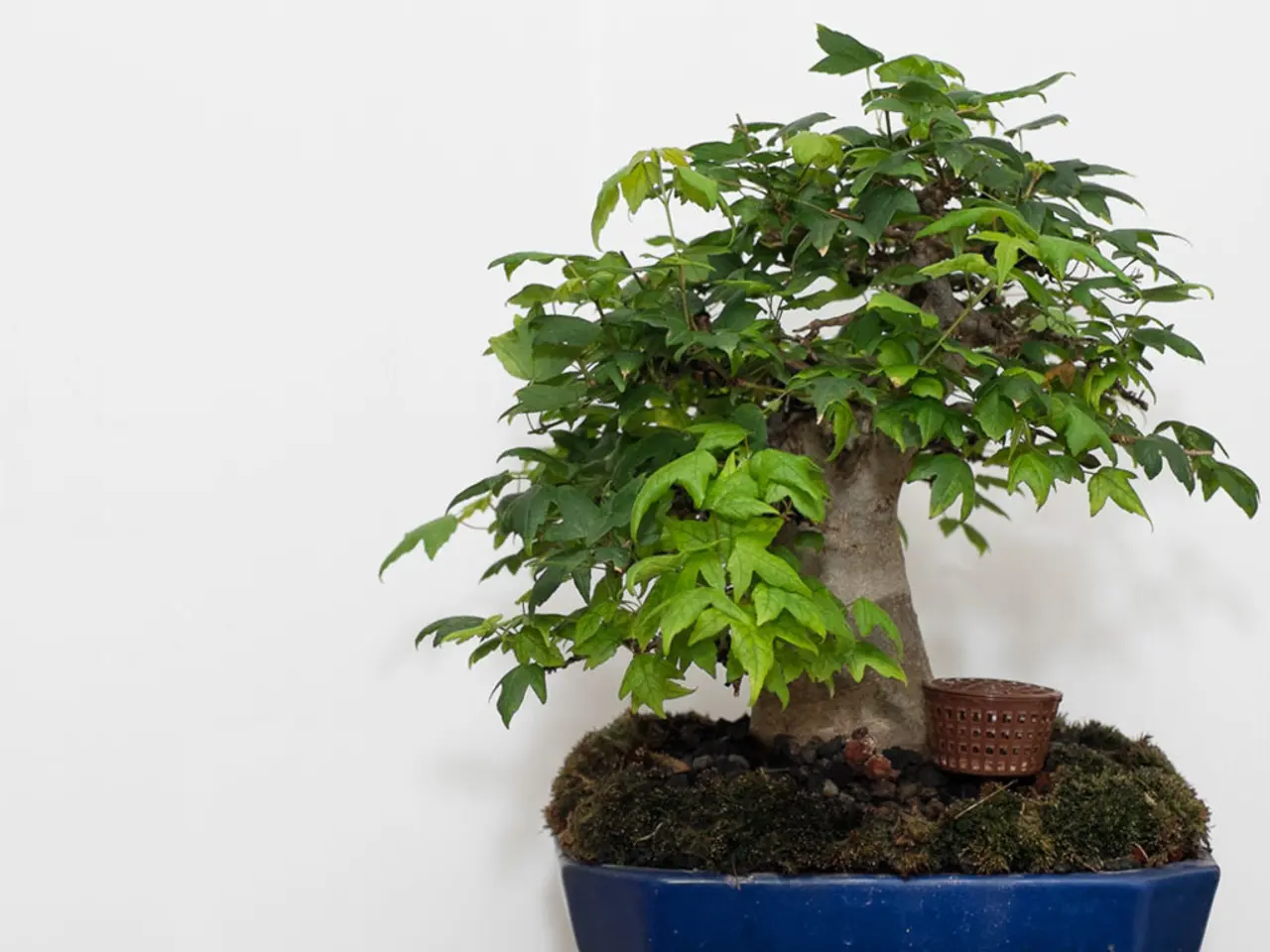Choosing the Right Bonsai Pot for Repotting: Focus on Drainage and Frequency
When it comes to nurturing a bonsai tree, the pot you choose plays a crucial role in its long-term health and vitality. Here are some key factors to consider for selecting the perfect bonsai pot.
Drainage
Adequate drainage is essential to prevent water stagnation and root rot. Choose pots with drainage holes that facilitate excess water escape and allow oxygen to flow freely to the roots, which is vital for bonsai health.
Pot Size and Shape
The pot size and shape should be appropriate for the bonsai's growth habits. Shallow pots, for instance, are ideal for maintaining the miniature size of the bonsai, as they naturally restrict root growth. On the other hand, wide pots can be beneficial for forest-style bonsai. The pot should fit the intended tree size but not be excessively large to avoid overwatering issues.
Material
Traditional bonsai pots are made of ceramic or stone, which offer breathability and aesthetic appeal. These materials allow the soil to drain freely without waterlogging, contributing to the overall health of the bonsai. Plastic pots, while durable and lightweight, may lack ideal airflow and evaporation control.
Soil Compatibility
The bonsai pot should work well with bonsai-specialized, well-draining soil mixes. These usually contain akadama, coarse sand, and organic components, ensuring effective water retention and aeration.
Comfort and Growth Considerations
The pot should provide enough space for root development but maintain the tree's miniature form. Too large pots can encourage excessive root growth, while too small pots restrict it too much, damaging long-term health.
Aesthetic Harmony
Besides health, the pot’s colour, shape, and style should complement the tree species and the artistic style of the bonsai. This is crucial for the traditional appearance and vigor of the bonsai.
In practice, a flat, shallow ceramic or stone pot with drainage holes is ideal. This pot should be matched to the bonsai's current size and root spread, and a well-draining bonsai soil mix should be used. Ensure drainage remains unblocked, and consider bottom-watering techniques to boost root density without saturating the soil.
Avoid pots that trap water or are too large, as these can harm root health and bonsai vitality over time. Also, remember to clean the bonsai pot every 2-3 months to prevent disease buildup.
By following these guidelines, you can create a perfect environment for your bonsai to flourish, and increase your chances of success with these miniature trees.
- For a thriving bonsai, it's essential to choose a shallow, ceramic or stone pot with drainage holes, as it provides adequate drainage and allows the soil to breathe, contributing to the tree's health.
- To ensure your bonsai maintains its miniature size while promoting healthy root growth, you should select a pot that matches the current size and root spread of the bonsai, and use a well-draining bonsai soil mix.




